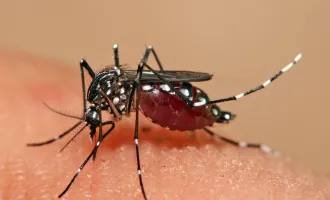Biomed Workforce Forum Spotlights Nation's Research Training
Biomedical graduate programs should prepare students for a wider range of scientific careers that extend beyond the university, according to a National Institutes of Health (NIH) report examining the biomedical workforce.
Although the small number of faculty positions available cannot accommodate the growing number of trained researchers, graduate programs continue to focus on training young researchers for careers in academia. Meanwhile, the biomedical workforce both inside and outside academia lacks diversity, a second NIH report states.
[node:field_syn_pull_quote]
These were some of the conclusions of two NIH reports issued in June by the Advisory Council to the Director (ACD) Working Group on the Biomedical Workforce and the ACD Working Group on Diversity in the Biomedical Workforce.
The groups’ findings were the topic of a January 16 forum at UCSF. The NIH Workforce Report Forum and Discussion featured Dr. Keith Yamamoto, UCSF professor and Executive Vice Dean of the School of Medicine, who served on the working groups; Graduate Division Dean Dr. Elizabeth Watkins; Vice Chancellor for Diversity and Outreach Dr. Renee Navarro; Director of the Office of Career and Professional Development (OCPD) Bill Lindstaedt; and Associate Dean for Research Strategy Dr. Theresa O’Brien, who served as moderator.
Reporting on the findings and recommendations of both working groups, Dr. Yamamoto said that entering into an academic career remains difficult, given the upsurge of trained PhDs and retention of senior faculty, and unattractive due to the lengthy period of training and low starting salaries.
The working group on the Biomedical Workforce study found that graduate programs failed to adequately familiarize trainees with other career options. Their study recommended shorter programs and more diverse training for both graduate students and postdocs, as well as improving the pay and benefits of postdocs.
The study also recommended that a standardized method for tracking the careers of the biomedical workforce be put in place to make this information more readily accessible.
The working group on Diversity in the Biomedical Workforce was established following a 2011 study that found that African American candidates were less likely than white candidates to be awarded NIH grants.
Their study suggested enhancing the diversity of the biomedical workforce by identifying “key transition points” in the scientific career track, including entrance into graduate school, transition to postdoc, attainment of faculty positions and the awarding of NIH grants, where minorities are severely underrepresented.
To address the lack of diversity in the biomedical workforce, the group recommended launching grant programs such as Building Infrastructure Leading to Diversity (BUILD) to fund and train undergraduates at diverse institutions, and establishing a national research mentoring network to connect graduate students, postdocs and faculty to mentors, and to provide mentorship training.
Lastly, to ensure fairness in peer review during the grant application process, they recommended diversity awareness training for study section members, striving to ensure that grant applications remain anonymous, and continuing the Early Career Program Pilot, which promotes young investigators in reviewing grants, an opportunity thought to improve their chances of being awarded an R01.
Dr. Navarro discussed how the recommendations of the NIH working groups, particularly in the case of the group discussing Diversity in the Biomedical Workforce, were being addressed at UCSF. She demonstrated the need to diversify the faculty and graduate student body at UCSF, as reflected in the low percentage of underrepresented minorities across the faculty body and across all graduate programs.
She also noted that UCSF continues to recruit underrepresented minorities for student, postdoctoral and faculty positions and strives to improve the campus climate through such avenues as the recently concluded Inclusion Survey.
Dr. Watkins showed the career outcomes for those earning a PhD from UCSF based on 1997-2006 data. Compared to the national study done by the NIH, a slightly greater percentage of UCSF graduates ended up in academic research or teaching and in industry, while a dramatically lower percentage ended up in government research or in non-science-related work. The proportion of UCSF graduates engaged in science-related non-research positions and their rates of unemployment was similar to the rates in the national population.
Finally, Mr. Lindstaedt outlined the various OCPD services and programs, including career development and guidance to individuals and the Graduate Student Internships for Career Exploration (GSICE) program. He also noted the appointment of the new Assistant Dean of Postdoc Affairs and Graduate Outreach Christine Des Jarlais and the existence of UCSF’s Entrepreneurship Center.
Lastly, he introduced myIDP (or Individual Development Plan), which helps users to explore the career possibilities that a doctorate can open up to them.
To view a video of the speakers’ presentations, visit career.ucsf.edu.
Follow-up discussions about biomedical training and workforce issues will be hosted by Drs. Yamamoto, Navarro and Watkins at both Mission Bay and Parnassus campuses.
Parnassus Brown Bag: Friday February 22, noon-1 p.m. (room TBD).
Mission Bay Brown Bag: Friday March 15, noon-1 p.m. (room TDB).
The Biomedical Workforce Working Group report can be found here: http://acd.od.nih.gov/biomedical_research_wgreport.pdf
The Working Group on Diversity in the Biomedical Research Workforce report can be found here: http://acd.od.nih.gov/Diversity in the Biomedical Research Workforce Report.pdf


